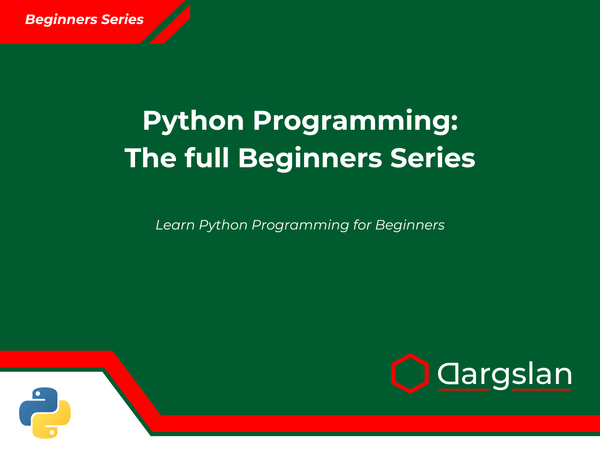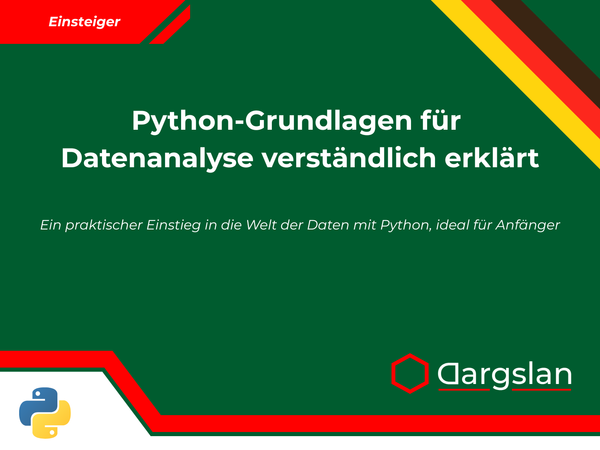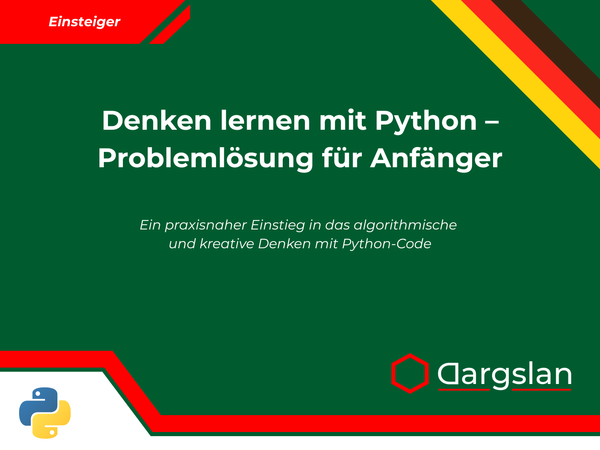Book Review: Clean Code with Bash Scripts
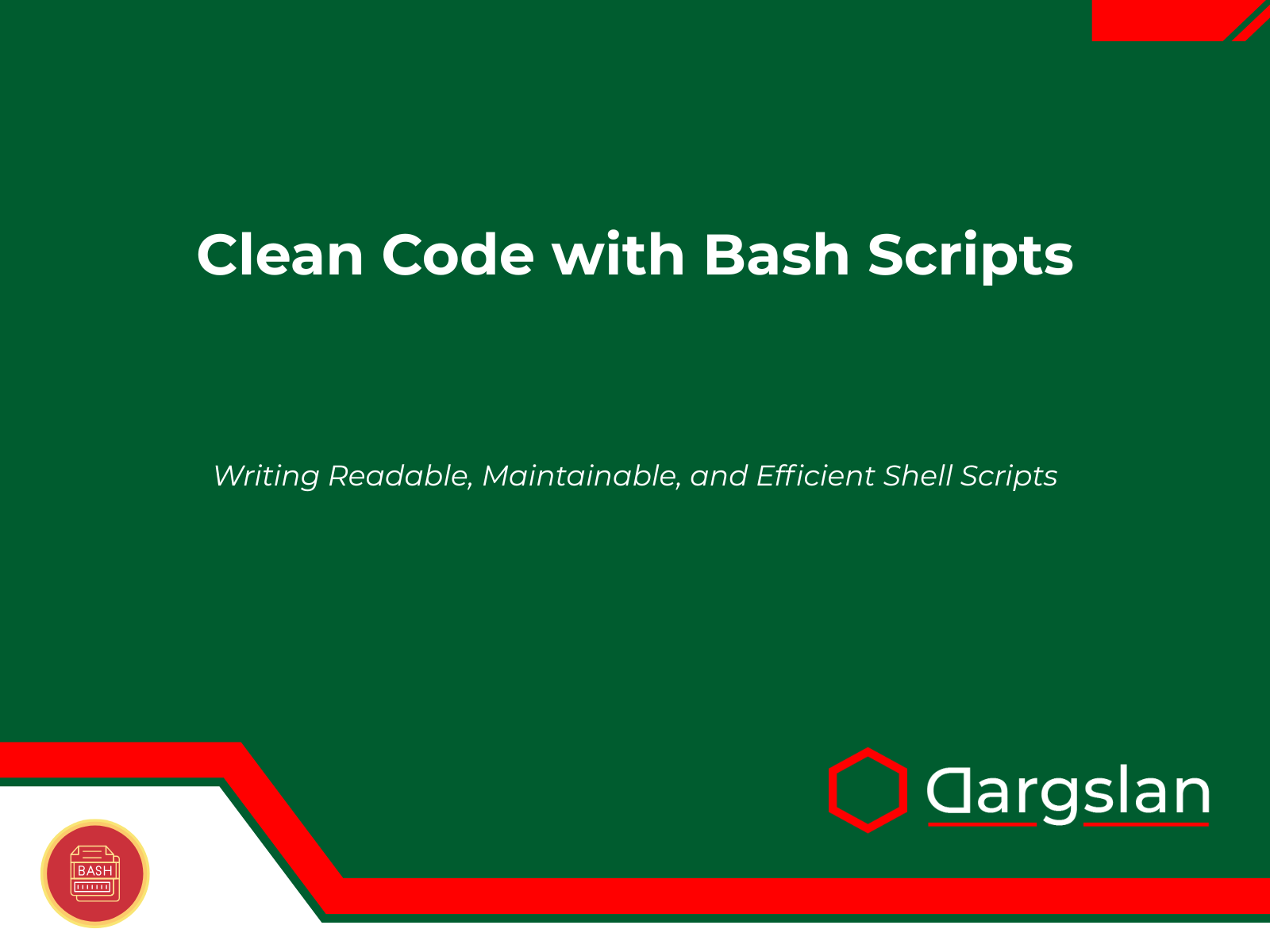
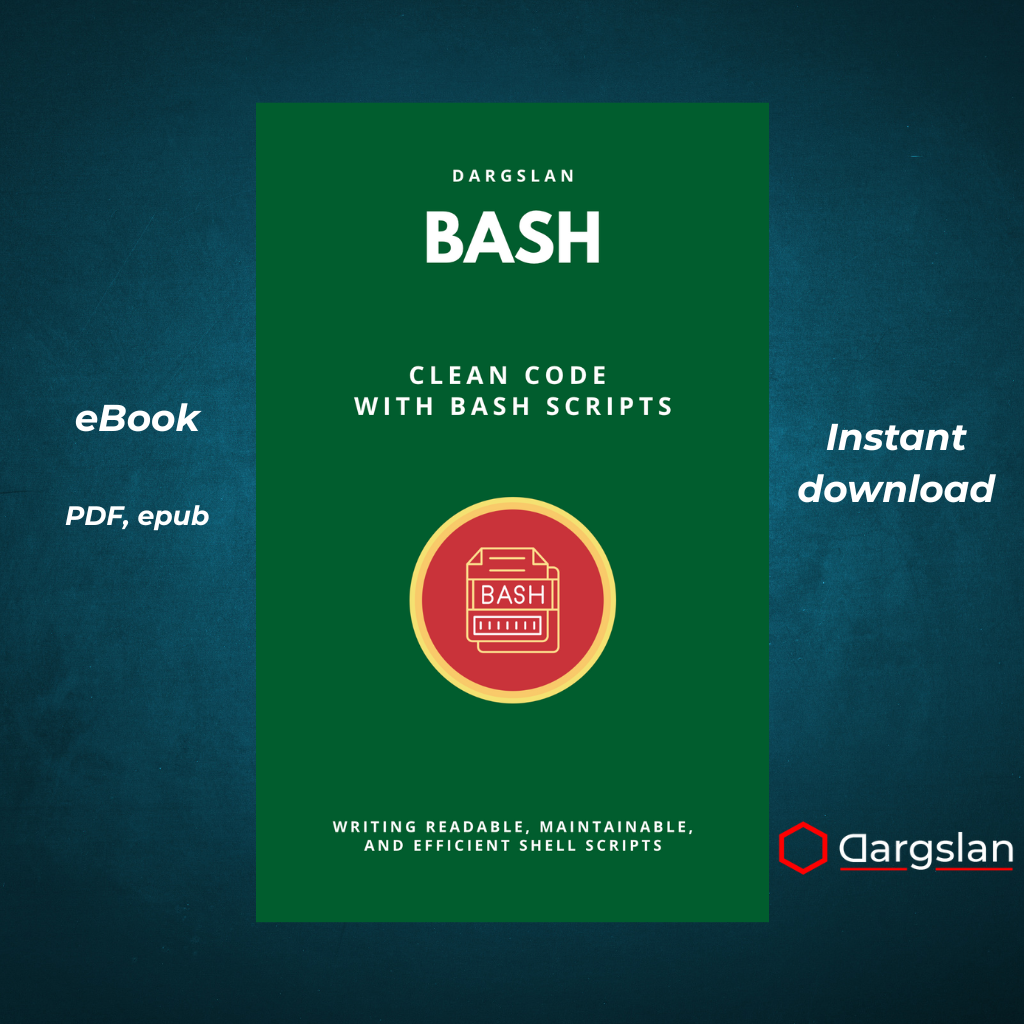
Clean Code with Bash Scripts
Writing Readable, Maintainable, and Efficient Shell Scripts
Clean Code with Bash Scripts: The Ultimate Guide to Mastering Shell Scripting
Book Review: "Clean Code with Bash Scripts: Writing Readable, Maintainable, and Efficient Shell Scripts"
Author: Dargslan
Rating: ★★★★★
Target Audience: System administrators, DevOps engineers, developers, and anyone working with Bash scripts
Difficulty Level: Beginner to Advanced
Executive Summary
In the world of system administration and automation, few skills are as consistently valuable as Bash scripting. Yet, as many professionals discover, there's a vast difference between scripts that simply work and scripts that are clean, maintainable, and robust. "Clean Code with Bash Scripts" bridges this gap masterfully, offering a comprehensive guide that transforms functional Bash scripts into professional-grade tools.
This groundbreaking book addresses a critical gap in technical literature. While numerous resources teach basic Bash syntax, very few tackle the principles of writing clean Bash code. Dargslan has created what will undoubtedly become the definitive resource for elevating your shell scripting from merely functional to truly professional.
Why This Book Matters
In today's DevOps-driven environment, infrastructure as code and automation have become standard practices. Bash scripts often form the foundation of deployment pipelines, system maintenance tasks, and critical operational procedures. Yet poorly written scripts create technical debt, cause mysterious failures, and become maintenance nightmares.
This book arrives at the perfect time, as organizations increasingly recognize that script quality directly impacts system reliability and team productivity. Whether you're managing cloud infrastructure, containerized applications, or traditional servers, the principles in "Clean Code with Bash Scripts" will dramatically improve your automation effectiveness.
Detailed Chapter Analysis
Chapter 1: Introduction to Clean Bash Scripting
The book opens by establishing what "clean code" means in the context of Bash scripting. Dargslan makes a compelling case for why clean code matters particularly in shell scripts, which often start small but grow into critical system components.
Key concepts include:
- The true cost of messy scripts in terms of debugging time and system reliability
- How clean Bash code differs from merely functional code
- Core principles that define clean shell scripts
- Common myths about Bash scripting that lead to poor practices
The author skillfully introduces the clean code mindset without overwhelming readers. A particularly valuable section contrasts before-and-after examples of the same script, demonstrating how clean code principles transform unruly scripts into elegant solutions.
Chapter 2: Bash Scripting Basics (Refresher)
Rather than a typical syntax reference, this chapter provides a focused refresher that emphasizes often-misunderstood aspects of Bash. The author covers:
- Shell execution environments and how they affect your scripts
- Variable scope and manipulation techniques
- Command substitution best practices
- Exit codes and their proper interpretation
- The surprising behavior of certain Bash constructs
Even experienced scripters will find valuable insights, as Dargslan highlights subtle behaviors that can lead to bugs. Each concept is presented with clean code principles in mind, setting the stage for more advanced topics.
Chapter 3: Structuring Your Script for Clarity
This outstanding chapter presents a framework for organizing Bash scripts that dramatically improves readability. The author introduces:
- A template for well-structured scripts that scales from simple to complex
- Techniques for breaking scripts into logical sections
- Best practices for function organization and design
- When and how to split functionality across multiple files
- Methods to maintain clarity as script complexity grows
The practical examples show how to transform sprawling scripts into well-organized tools. Particularly valuable is the section on structuring scripts for both human readers and machine execution.
Chapter 4: Naming Conventions and Comments
Often overlooked in technical documentation, naming and commenting get thorough treatment here. Dargslan provides:
- A consistent naming convention for variables, functions, and files
- Guidelines for self-documenting code that reduces the need for comments
- Techniques for writing comments that actually add value
- Examples of how descriptive naming changes script comprehension
- Common naming anti-patterns and their solutions
The author makes a compelling case that good naming is a form of documentation that never goes out of date. The before-and-after examples dramatically demonstrate how naming changes can transform impenetrable code into self-evident solutions.
Chapter 5: Defensive Scripting and Input Validation
This critical chapter addresses one of the most common sources of shell script failures: unexpected inputs. The comprehensive coverage includes:
- Techniques for validating command-line arguments
- Methods to handle unexpected file content safely
- Approaches for dealing with inconsistent environment variables
- Patterns for defending against common injection attacks
- How to make scripts resilient against unexpected operating conditions
The defensive programming techniques presented here transform brittle scripts into robust tools. Particularly valuable is the section on designing scripts that fail fast and explicitly rather than continuing with invalid inputs.
Chapter 6: Error Handling and Logging
Error handling in Bash can be notoriously challenging, but this chapter presents clear patterns for managing failures gracefully. Key topics include:
- Setting up comprehensive error trapping
- Creating informative error messages that aid troubleshooting
- Implementing proper exit codes for script integration
- Developing logging that balances verbosity with usefulness
- Techniques for preserving context in error situations
The practical logging framework presented in this chapter is worth the price of the book alone. It provides a clean, reusable approach to script logging that works across environments from development to production.
Chapter 7: Reusability and DRY Principles
Building on earlier chapters, Dargslan now tackles how to make script components reusable. The coverage includes:
- Design patterns for reusable Bash functions
- Techniques for building script libraries
- Methods to avoid repetition without sacrificing readability
- Approaches for balancing reusability with script independence
- Patterns for parameterizing commonly used operations
The chapter excels in presenting practical examples of reusable components that don't sacrifice clarity. The author's balanced approach acknowledges when duplication might actually be preferable to overly complex abstraction.
Chapter 8: Making Scripts Configurable and Portable
This invaluable chapter addresses how to create scripts that work across different environments. Key topics include:
- Strategies for external configuration
- Techniques for environment detection and adaptation
- Methods to handle path differences between systems
- Approaches for dealing with command variations across distributions
- Patterns for making scripts both configurable and secure
The practical configurability framework presented here strikes an excellent balance between flexibility and simplicity. The author's approach to portable scripts will save countless hours of troubleshooting when deploying scripts across diverse environments.
Chapter 9: Testing and Debugging Bash Scripts
Testing shell scripts is rarely covered in depth, making this chapter particularly valuable. The comprehensive treatment includes:
- Frameworks and approaches for automated script testing
- Techniques for unit testing Bash functions
- Methods for integration testing complex scripts
- Debugging strategies from basic to advanced
- Tools that improve testing and debugging workflows
The practical testing framework presented here is particularly impressive, showing how to apply software engineering best practices to shell scripts without excessive complexity.
Chapter 10: Performance and Optimization Tips
Performance matters in shell scripts, and this chapter provides targeted advice for optimization. The author covers:
- Identifying and resolving common performance bottlenecks
- Techniques for reducing unnecessary subshells and processes
- Methods to optimize file operations and text processing
- Approaches for measuring script performance accurately
- When to use Bash and when to consider other tools
The nuanced discussion on balancing readability with performance is particularly valuable. Rather than premature optimization, the author provides practical guidance on when and how to optimize scripts.
Chapter 11: Real-World Examples and Refactoring
Theory meets practice in this outstanding chapter that walks through complete refactoring examples. The coverage includes:
- Step-by-step refactoring of deployment scripts
- Transforming monitoring tools for better maintainability
- Improving data processing scripts for reliability
- Enhancing backup tools for error handling
- Refactoring legacy scripts while maintaining functionality
Each example provides before-and-after code with detailed explanations of the changes. The progression from working but problematic scripts to clean, maintainable solutions provides a masterclass in script improvement.
Chapter 12: Clean Code Mindset for Shell Developers
The book concludes with a thoughtful chapter on developing a clean code philosophy. Key topics include:
- Building a personal style guide for consistent scripting
- Techniques for code review specifically for Bash scripts
- Methods for continuous improvement of scripting skills
- Approaches for advocating clean code practices in teams
- Common objections to clean Bash and how to address them
This chapter successfully ties together all previous material into a cohesive approach to script development. The guidance on implementing clean Bash practices in team environments is particularly valuable for lead developers and system administrators.
Appendix A: Clean Bash Checklist
This practical appendix provides a comprehensive checklist for evaluating script quality. Covering every aspect from initial structure to error handling, this checklist serves as both a quick reference and a quality assurance tool. The checklist is designed to be practical, with sections that can be applied incrementally to improve script quality over time.
Appendix B: Common Mistakes in Bash
This valuable reference catalogs the most frequent Bash scripting errors and their solutions. Each entry includes:
- A description of the problem
- Example code showing the issue
- The potential consequences
- The clean code solution
- Methods to detect similar issues in existing scripts
This appendix alone could save hours of debugging time by highlighting pitfalls before they cause problems.
Appendix C: Useful Tools for Bash Developers
The final appendix presents a curated collection of tools that support clean Bash scripting. Coverage includes:
- Linting and static analysis tools
- Testing frameworks
- Documentation generators
- IDE plugins and extensions
- Runtime debugging helpers
Each tool is presented with installation instructions, basic usage, and recommendations for integration into development workflows.
Key Strengths
1. Practical Orientation
Unlike many programming books that present idealized examples, "Clean Code with Bash Scripts" acknowledges the messy reality of system administration. The examples address real-world scenarios like handling legacy systems, dealing with inconsistent environments, and working within organizational constraints.
2. Progressive Complexity
The book skillfully scales its advice from simple scripts to complex automation tools. Beginners can apply the basic principles immediately, while experienced scripters will appreciate the advanced patterns for larger scripts.
3. Balanced Approach
Dargslan avoids dogmatism, acknowledging that different situations call for different approaches. The nuanced discussion of when to prioritize readability, performance, or brevity provides context-sensitive guidance rather than rigid rules.
4. Complete Examples
Every chapter includes complete, practical examples that demonstrate principles in context. The code samples are neither trivially simple nor impractically complex, striking a perfect balance for learning.
5. Language-Specific Insights
Rather than applying generic programming principles to Bash, the author addresses the unique challenges of shell scripting. The guidance acknowledges Bash's strengths and weaknesses as a language, with techniques specifically tailored to shell environments.
Who Should Read This Book
System Administrators
Will gain techniques to transform routine tasks into reliable, maintainable automation
DevOps Engineers
Will learn how to create robust deployment and configuration scripts that integrate smoothly with CI/CD pipelines
Software Developers
Will discover how to apply software engineering principles to shell scripts that support development workflows
IT Students
Will build a solid foundation in professional-grade scripting that separates them from peers
Anyone Who Writes Bash Scripts
Will benefit from the comprehensive approach to improving script quality, regardless of specific role
Real-World Applications
The techniques in this book apply directly to numerous common scenarios:
- Deployment Automation: Create deployment scripts that handle errors gracefully and provide clear feedback
- System Monitoring: Develop monitoring tools that are easily configurable across different environments
- Data Processing: Build data transformation scripts that validate inputs and report problems clearly
- Backup Systems: Design backup scripts that detect and handle failure conditions appropriately
- Development Tooling: Craft development utilities that work consistently across team members' environments
Comparison with Similar Books
While several books cover Bash scripting syntax and commands, "Clean Code with Bash Scripts" stands alone in its focus on script quality and maintainability. Unlike general Linux administration books that include some scripting, this volume provides depth specifically on writing better scripts.
Compared to general programming clean code books, this title provides Bash-specific guidance that acknowledges the unique characteristics of shell scripting. The result is advice that works in practice, not just in theory.
Learning Outcomes
After reading and applying the principles in this book, you will be able to:
- Structure scripts logically for maximum readability
- Create robust error handling that makes debugging straightforward
- Design reusable components that reduce duplication without adding complexity
- Implement effective testing strategies for shell scripts
- Refactor existing scripts to improve maintainability
- Apply a consistent style that makes scripts accessible to other team members
- Develop shell scripts that work reliably across different environments
- Balance performance considerations with code clarity
- Recognize and avoid common shell scripting pitfalls
- Champion clean code practices within your organization
Technical Details
Format: Available in print and digital formats
Pages: 237
Code Examples: Over 200 practical code samples
Downloadable Content: Additional scripts and tools available online
Prerequisites: Basic familiarity with Bash and command-line operations
Conclusion: A Must-Have for Modern System Administrators and DevOps Professionals
"Clean Code with Bash Scripts" fills a crucial gap in technical literature by applying software engineering principles to the often-neglected area of shell scripting. Dargslan has created a comprehensive guide that will transform how you approach script development.
Whether you're writing one-off utility scripts or building enterprise automation systems, the principles in this book will make your code more reliable, more maintainable, and more valuable to your organization. The investment in learning these techniques pays immediate dividends in reduced debugging time, fewer production incidents, and more effective automation.
In an age where infrastructure as code and automation are fundamental to IT operations, the ability to write clean, robust Bash scripts is an increasingly valuable skill. This book provides the guidance needed to elevate your scripting from functional to professional, making it an essential addition to any technical professional's library.
Reader Testimonials
"This book transformed how our entire DevOps team approaches scripting. Our deployment automation is now robust enough that we actually sleep through the night." — Maria L., Senior DevOps Engineer
"I've been writing Bash scripts for 15 years and still learned something new in every chapter. The section on error handling alone saved me countless hours of debugging." — James T., Systems Architect
"As someone new to system administration, this book gave me a framework for writing scripts that experienced colleagues could understand and maintain. It accelerated my professional growth tremendously." — Aisha K., Junior SysAdmin
"We adopted the clean Bash checklist as part of our code review process, and script quality improved dramatically across all our repositories." — Robert M., IT Director
FAQ About the Book
Is this book suitable for Bash beginners?
While some basic Bash knowledge is helpful, the book includes a refresher chapter and builds concepts gradually. Beginners who understand basic command-line operations can follow along and learn good practices from the start.
Does the book cover advanced Bash features?
Yes, the book progresses from fundamental concepts to advanced techniques. Experienced scripters will find valuable guidance on complex topics like proper subshell usage, parameter expansion tricks, and optimizing performance.
Are the examples applicable to my environment?
The author has taken care to present examples that work across different Linux distributions and even macOS. The chapter on portability specifically addresses making scripts work in diverse environments.
Can I apply these principles to other shell languages?
While focused on Bash, many principles apply to other shell languages like Zsh or Ksh. The book occasionally notes where approaches would differ in other shells.
Does the book cover shell script security?
Yes, security considerations are integrated throughout, with specific sections on secure coding practices, handling sensitive data, and avoiding common security pitfalls.
How does this compare to general "Clean Code" books?
This book applies clean code principles specifically to the unique challenges of shell scripting. It acknowledges Bash's quirks and provides language-specific solutions rather than generic programming advice.
Transform your shell scripts from brittle hacks to professional tools. "Clean Code with Bash Scripts" is the definitive guide to writing Bash scripts that you and your colleagues will understand, maintain, and appreciate for years to come.
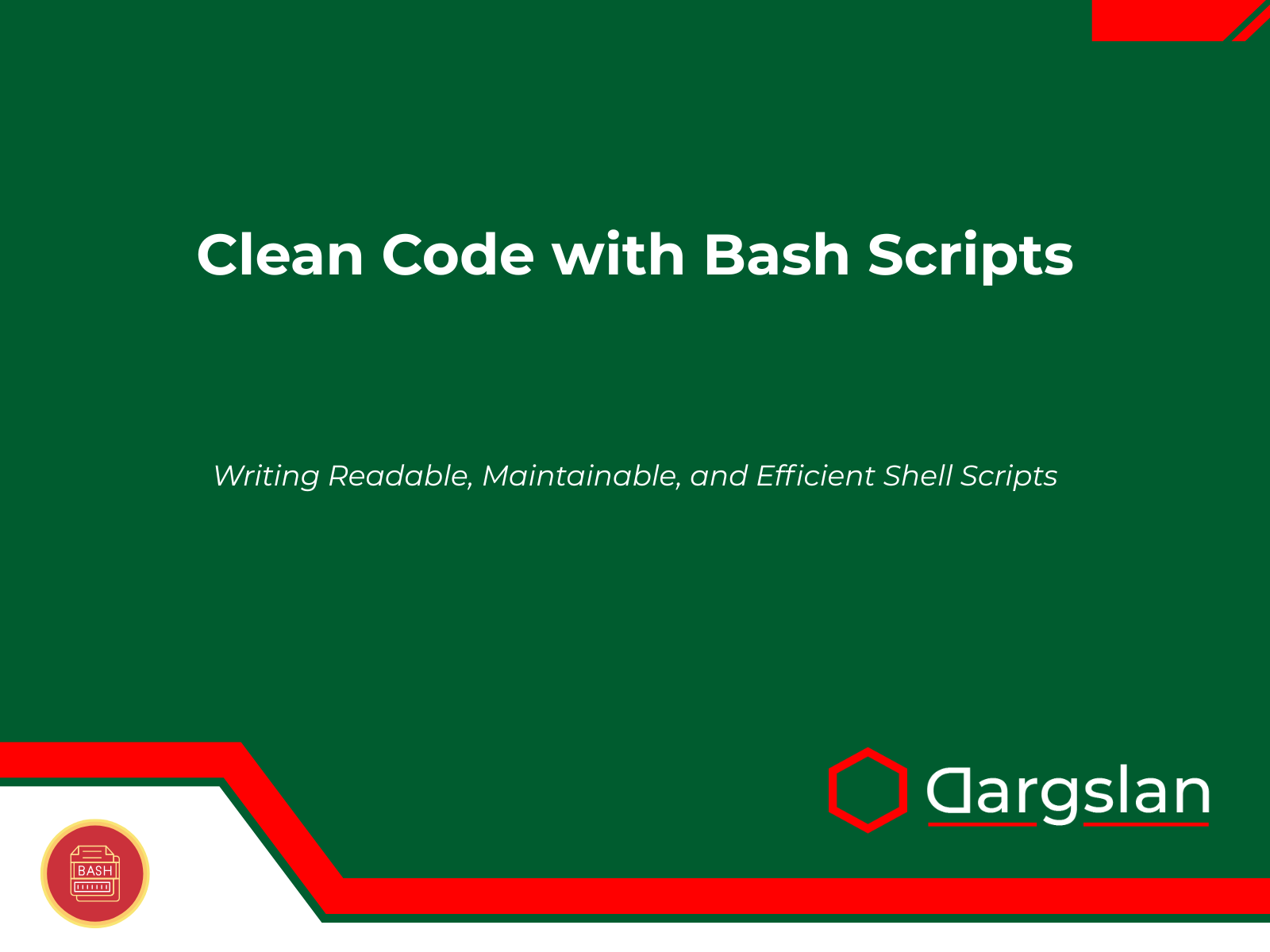
Clean Code with Bash Scripts
Writing Readable, Maintainable, and Efficient Shell Scripts


